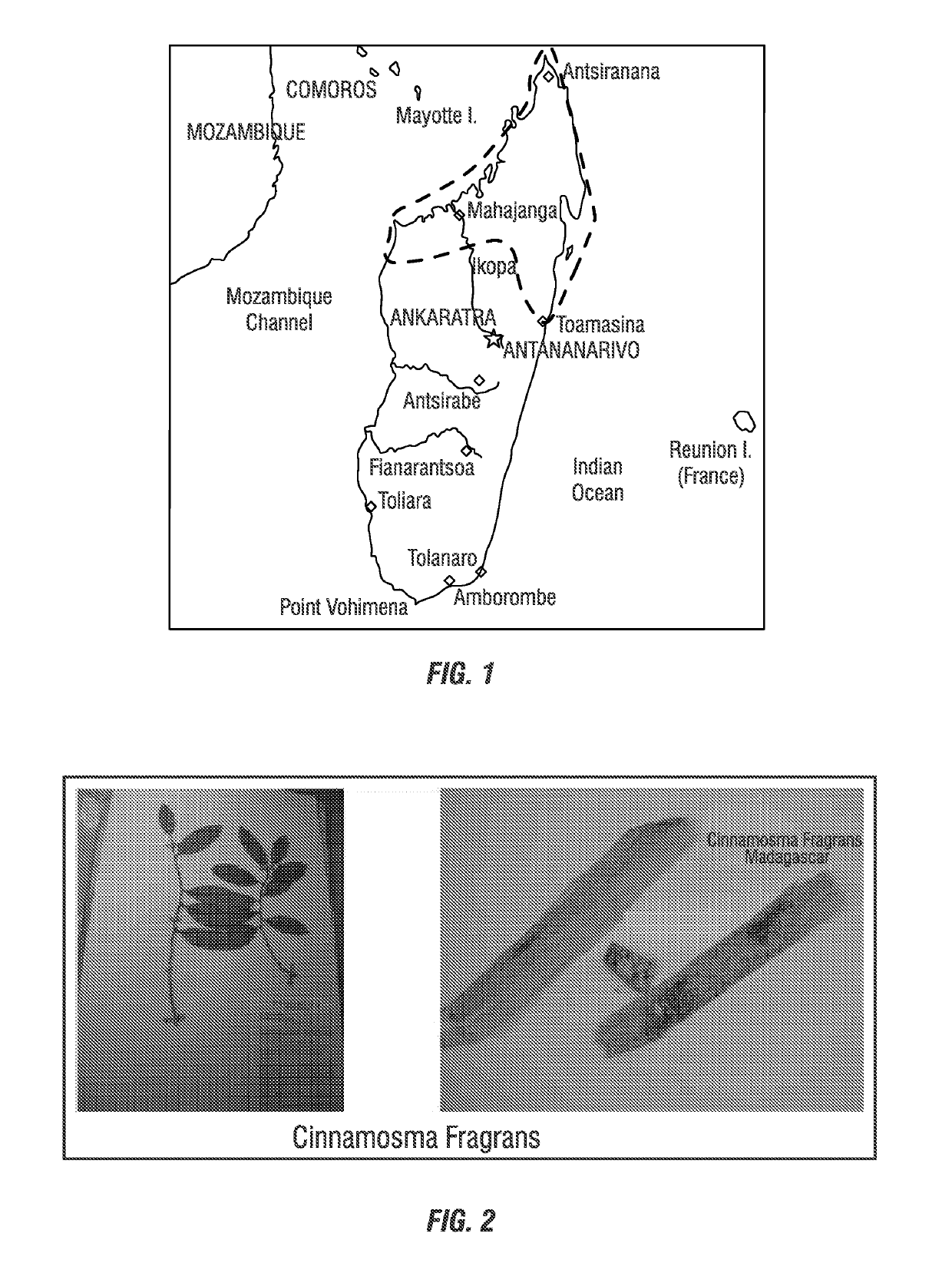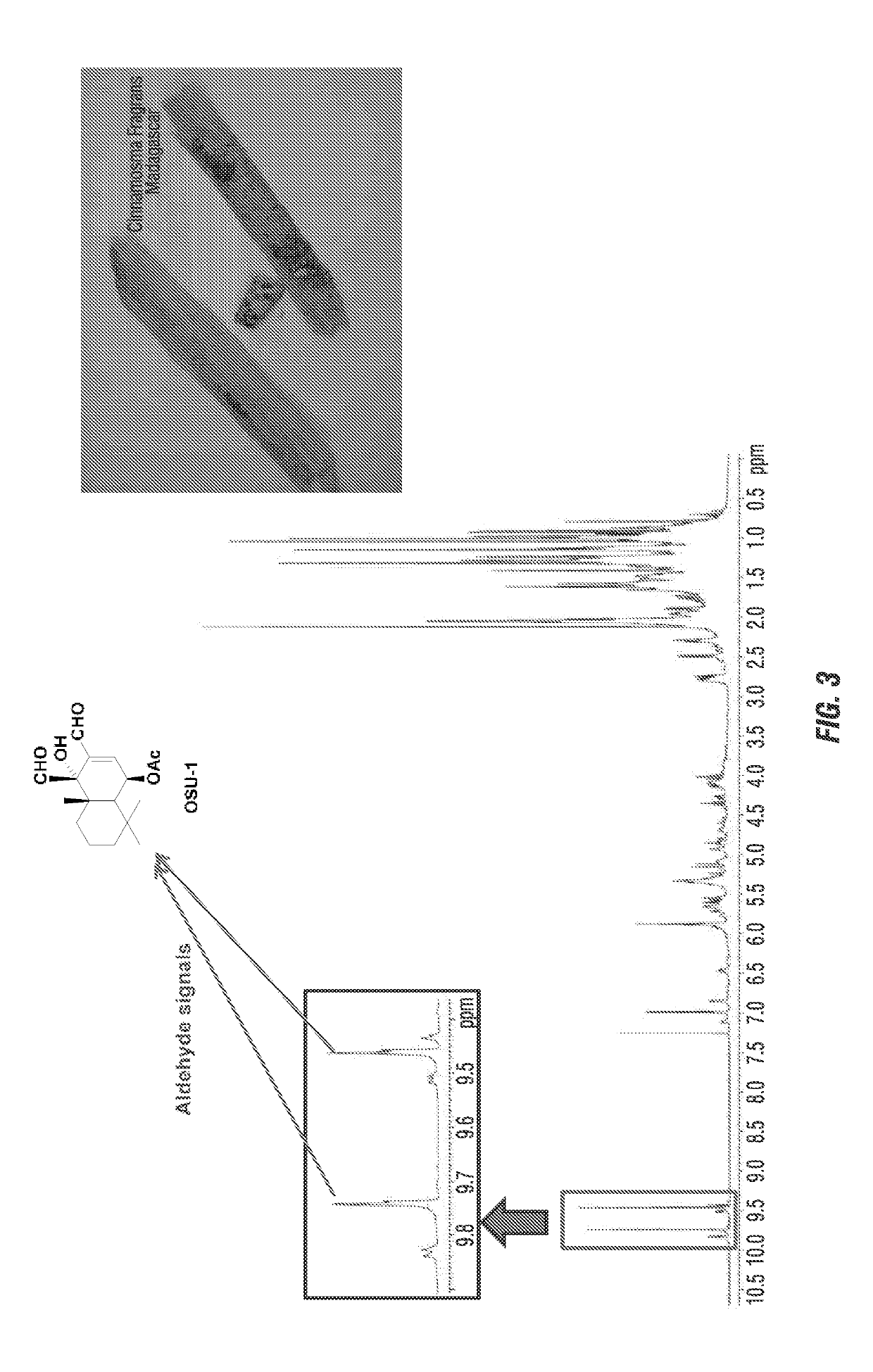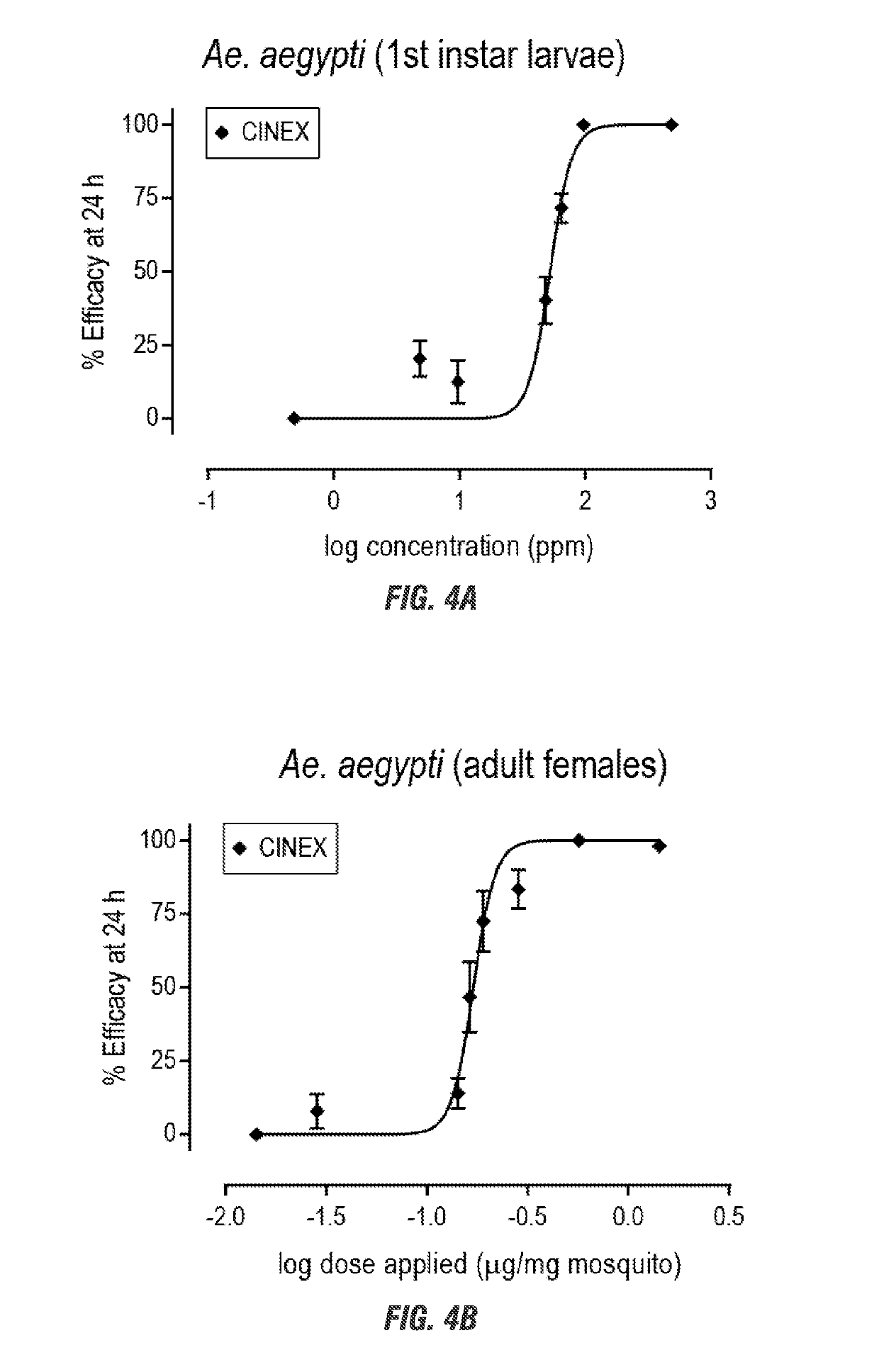Use of sesquiterpenes and their analogs as green insecticides for controlling disease vectors and plant pests
- Summary
- Abstract
- Description
- Claims
- Application Information
AI Technical Summary
Benefits of technology
Problems solved by technology
Method used
Image
Examples
example 1
[0065]Each compound of cinnamodial (CDIAL), cinnafragrin A (CM18) and cinnamosmolide (CMOS) were isolated form the barks of the Madagascan plants Cinnamosma fragrans, Cinnamosma macrocarpa and Cinnamosma madagascariensis. Each was dissolved in 100% acetone and applied directly to the cuticle of adult female mosquitoes (Aedes aegypti, Anopheles gambiae, and Culex pipiens) or 3rd instar nymph soybean aphids (Aphis glycines). The bark extract and the isolated compounds was toxic to larval and adult female mosquitoes within 24 hr in a concentration / dose dependent manner (FIGS. 4 and 5). Among the isolated compounds. CDIAL was the most potent and efficacious (Table 1).
TABLE 1Concentration-toxicity parameters of compounds isolated from CINEX on larval and adultfemale mosquitoes. Asterisks indicate significant difference from CDIAL Daggers indicatesignificant difference from A. aegypti.Larval mosquitoesAdult female mosquitoesEC50 in ppmED50 in μg / mg mosquito(95% CI)(95% CI)CDIAL21.613.3†29...
example 2
Derivatives of CDIAL Developed by Inventors.
[0066]We have recently developed and synthesized at least six OSU-1 cinnamodial (CDIAL) derivatives and related compounds as well as development and synthesis of additional OSU-1 derivatives for screening in adult and larval Ae. aegypti.
example 3
[0067]Methods for Extraction and Identification of Sesquiterpenes from Cinnamosma madagascariensis
[0068]The following excerpt details methods of extraction and the sesquiterpenes that have been identified from Cinnamosma madagascariensis.
[0069]Two new drimane-type sesquiterpenes, cinnamadin (1) and cinnamodial 11R,12-dimethyl acetal (2), together with pereniporin B (3), ugandensolide (4), polygodial (5), cinnafragrin A, cinnamodial (6), sitosterol, stigmasterol, lignoceric acid, cinnamosmolide (7), D-mannitol, and -tocotrienol were isolated from Cinnamosma madagascariensis. The structures of the new compounds were determined by physical, chemical, and spectroscopic evidence. Compound 7 and D-mannitol were isolated in high yield (5% and 1.36%, respectively). Evaluation of the Alpha-glucosidase inhibitory properties of the isolated metabolites demonstrated that compounds 1 and 4 show moderate effects, while cinnamodial (6) exhibited the most potent activity. The chemosystematics of ...
PUM
 Login to View More
Login to View More Abstract
Description
Claims
Application Information
 Login to View More
Login to View More - R&D
- Intellectual Property
- Life Sciences
- Materials
- Tech Scout
- Unparalleled Data Quality
- Higher Quality Content
- 60% Fewer Hallucinations
Browse by: Latest US Patents, China's latest patents, Technical Efficacy Thesaurus, Application Domain, Technology Topic, Popular Technical Reports.
© 2025 PatSnap. All rights reserved.Legal|Privacy policy|Modern Slavery Act Transparency Statement|Sitemap|About US| Contact US: help@patsnap.com



